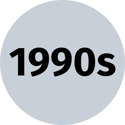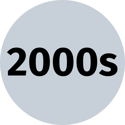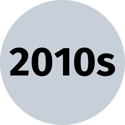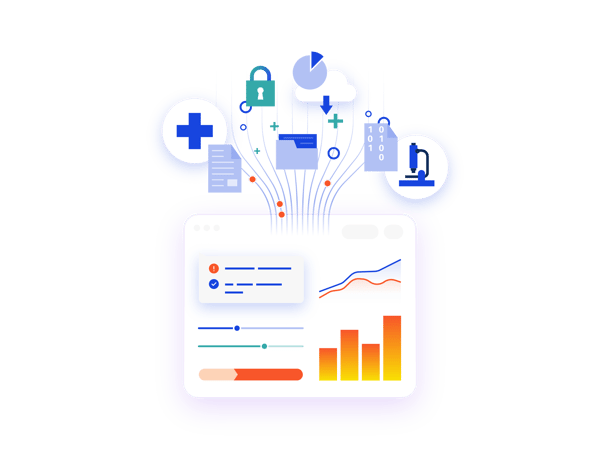
What is an RTSM?
An RTSM, or Randomization and Trial Supply Management system, is responsible for enabling critical functions of a clinical trial:
- Randomizing patients - active drug vs. the placebo
- Dispensing drug - ensuring patients receive the correct dose
- Site resupply - controlling the flow of drug from the manufacturer to the depot to the clinical site
The Evolution of RTSM Technology

Manual Patient-numbered Kits
Early randomization practices were performed manually. Patient-numbered kit labels were shipped to all sites in (generally) full blocks corresponding to the full course of treatments for a study. This method resulted in an enormous amount of wasted supply.

IVRS
Then in the 1990’s IVRS (Interactive Voice Response Systems) we’re developed to randomize patients over the phone. For the first time, all patient kits could be interchangeable for any other equivalent kit.

IWRS & IxRS
Continuing into the 2000’s, communication technology evolved bringing with it IWRS (Interactive Web Response Systems) and IxRS (a term coined for either IVRS or IXRS with the x being a variable).

IRT
The most widely used term in the industry today for our systems is IRT. IRT (Interactive Response Technologies) is considered more of an umbrella term that encompasses all modalities (voice, web and even mobile).

RTSM
Over time, it became apparent that supply management was just as critical as randomization and the combined action of them together elevated the functionality of the system, and the term RTSM emerged.
IRT. IVRS. IXRS. IWRS. RTSM. What? Why Do We Do This to Ourselves?
Gain insight into the evolution of these acronyms used throughout the history of these critical systems.
RTSM Best Practices - A Sponsors Guide through Study Start-Up
When it comes to the management of RTSM systems no industry standard exists. Many organizations have internal RTSM standards, but across organizations they are managed very differently. Here are 7 steps to help you reap the full benefits of a modern RTSM.
-
RTSM Strategy
Develop an RTSM strategy in tandem with your draft protocol.
In parallel with drafting the study protocol, the operations group should begin thinking about what they need the RTSM system to do. Fundamentally, the core functions of the RTSM are randomization and trial supply management.
From the study manager’s point of view, the RTSM is responsible for patient tracking, medication dispensation, cohort management as well as site activation, enrollment and maintaining the study blind. From the supply manager’s point of view, the RTSM is responsible for inventory management, drug accountability and reconciliation.
-
Data Strategy
Create a data strategy – Inputs, outputs, and systems integrations.
A key to success is beginning with the end in mind and working backwards. What study data will be needed from the RTSM once the study is completed? By whom and for what purpose? Who should have access to the information? What reports do you need? What is your audit preparedness strategy? What data will you need on an ongoing basis to support interim analyses? Daily study oversight?
The answers to these questions inform your RTSM reporting requirements.
-
Supply Strategy
Align your supply strategy.
Before designing the RTSM, there are several core supply decisions that need to be made. How will supply release information be entered in the RTSM; lot management features or a data integration? Resupply parameters?
Answers to these questions directly impact the RTSM design and can be very challenging to add to the system after the fact, depending on the flexibility of your RTSM. The next step is to conduct an internal assessment on forecasting capabilities. What forecasting tools are available to support your trial? Is this tool built into the RTSM itself or separate systems?
-
Vendor Management
Qualify your vendors.
The bio/pharmaceutical industry is a heavily regulated industry. RTSM systems must be validated for their intended use according to an established protocol.
Any changes to the system must be validated and the results documented. While vendors must build and validate the system, sponsors must be able to show proper oversight and quality controls over their clinical trial operations.
-
Maintain Consistency
Assign an internal RTSM SME.
In many sponsor organizations, there may not be a clear strategy for the RTSM after system go-live. In addition, as many clinical trial teams change, the RTSM knowledge may be lost through transition.
To combat this, an internal RTSM SME should be designated as part of the study start-up plan. This person can also focus on standardizing systems across studies and programs where applicable.
-
Specification Documents
See how we drive efficiency
Simplify the specification process for your study team.
With a modern RTSM that uses agile software development methodologies and Natural Language Processing (NLP) , study teams no longer need to approve 200+ page specification documents – they approve the actual system. The fully deployable system is delivered before the specs are even signed, and in some cases, in a demo state before seeing the actual spec for the first time.
-
UAT Process
Understand what level of UAT is necessary.
While the vendor is responsible to ensure the system is properly validated to perform to requirements, sponsors need to accept the system for use. This process called UAT, involves having the trial sponsor interact with the system and signing-off that it works as intended - or is fit-for-purpose.
Develop an RTSM strategy in tandem with your draft protocol.
In parallel with drafting the study protocol, the operations group should begin thinking about what they need the RTSM system to do. Fundamentally, the core functions of the RTSM are randomization and trial supply management.
From the study manager’s point of view, the RTSM is responsible for patient tracking, medication dispensation, cohort management as well as site activation, enrollment and maintaining the study blind. From the supply manager’s point of view, the RTSM is responsible for inventory management, drug accountability and reconciliation.
Create a data strategy – Inputs, outputs, and systems integrations.
A key to success is beginning with the end in mind and working backwards. What study data will be needed from the RTSM once the study is completed? By whom and for what purpose? Who should have access to the information? What reports do you need? What is your audit preparedness strategy? What data will you need on an ongoing basis to support interim analyses? Daily study oversight?
The answers to these questions inform your RTSM reporting requirements.
Align your supply strategy.
Before designing the RTSM, there are several core supply decisions that need to be made. How will supply release information be entered in the RTSM; lot management features or a data integration? Resupply parameters?
Answers to these questions directly impact the RTSM design and can be very challenging to add to the system after the fact, depending on the flexibility of your RTSM. The next step is to conduct an internal assessment on forecasting capabilities. What forecasting tools are available to support your trial? Is this tool built into the RTSM itself or separate systems?
Qualify your vendors.
The bio/pharmaceutical industry is a heavily regulated industry. RTSM systems must be validated for their intended use according to an established protocol.
Any changes to the system must be validated and the results documented. While vendors must build and validate the system, sponsors must be able to show proper oversight and quality controls over their clinical trial operations.
Assign an internal RTSM SME.
In many sponsor organizations, there may not be a clear strategy for the RTSM after system go-live. In addition, as many clinical trial teams change, the RTSM knowledge may be lost through transition.
To combat this, an internal RTSM SME should be designated as part of the study start-up plan. This person can also focus on standardizing systems across studies and programs where applicable.
Simplify the specification process for your study team.
With a modern RTSM that uses agile software development methodologies and Natural Language Processing (NLP) , study teams no longer need to approve 200+ page specification documents – they approve the actual system. The fully deployable system is delivered before the specs are even signed, and in some cases, in a demo state before seeing the actual spec for the first time.
Understand what level of UAT is necessary.
While the vendor is responsible to ensure the system is properly validated to perform to requirements, sponsors need to accept the system for use. This process called UAT, involves having the trial sponsor interact with the system and signing-off that it works as intended - or is fit-for-purpose.
 'How much validation is enough?' is a question that all sponsors struggle with. By focusing on those areas that introduce the highest risk to the study; particularly those that are not sufficiently covered by the vendor – should help sponsors hone in to exactly what they need to do to complete the validation of their RTSM.
'How much validation is enough?' is a question that all sponsors struggle with. By focusing on those areas that introduce the highest risk to the study; particularly those that are not sufficiently covered by the vendor – should help sponsors hone in to exactly what they need to do to complete the validation of their RTSM.
Laura Araujo, Vice President, Quality
Best Practices for Randomization and Trial Supply Management
This white paper provides even more guidance for sponsor IRT strategy – study start-up, maintenance and close-out.

Drive operational efficiencies in Phase 1 clinical trials.
Traditionally, RTSM systems (also known as IRT or IxRs), have been used for Phase 2 and 3 trials where randomization and trial supply management is too complex (at scale) to handle manually. With the increasing complexity of today’s trials, scale is no longer the determining factor when choosing to implement an RTSM. With the trend towards personalized medicine and gene therapies, and the FDA’s flexibility with accepting creativity in Oncology designs, Phase 1 trials can be even more complex than their Phase 2 and 3 counterparts.
